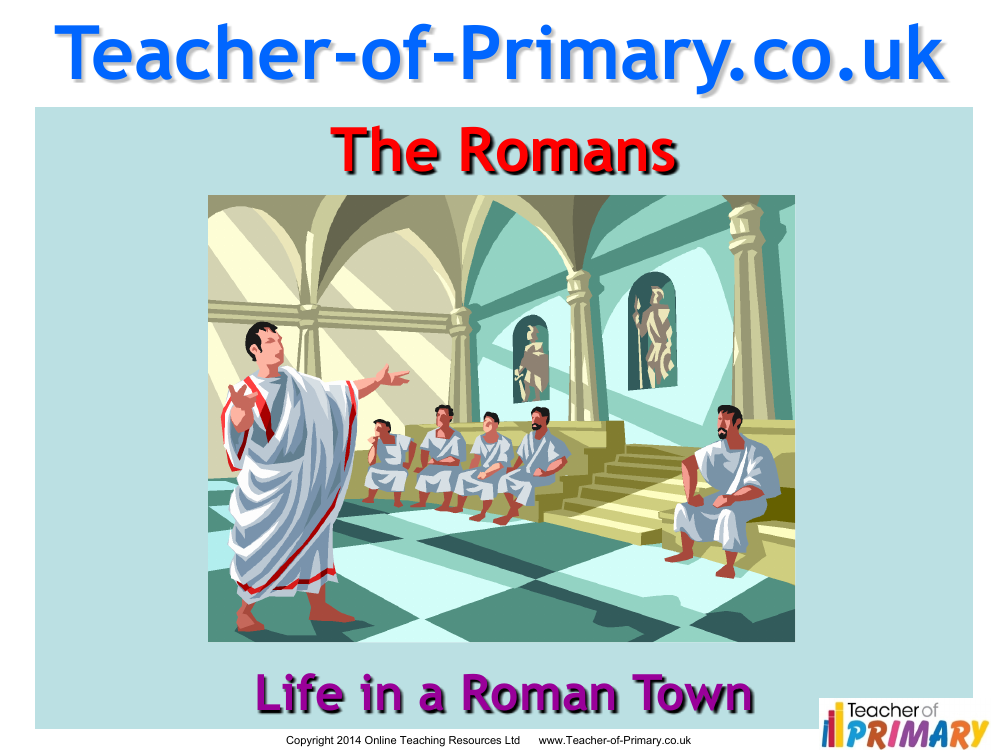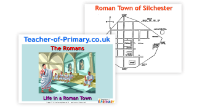Life in a Roman Town - PowerPoint

History Resource Description
The educational resource titled "Life in a Roman Town" provides a comprehensive insight into the daily existence within Roman urban centres. Aimed at students, the objective is to impart knowledge about the various aspects of life in a Roman town, including the infrastructure, social hierarchy, and cultural practices. Roman towns were meticulously planned, featuring a central meeting place known as the forum, government buildings such as the basilica, temples, churches, theatres, public baths, inns, and residential houses. These towns were characterised by their straight roads and often fortified with walls to control entry. Key buildings like the town hall, law courts, and tax offices were situated around the forum, which was the heart of the town. Shops and eateries provided goods and services, showcasing the reach of the Roman Empire.
The resource contrasts the experiences of the wealthy with those of the poor in Roman towns. While the affluent enjoyed well-built homes with heating and sewer connections, the less fortunate resided in poorly constructed rented flats lacking basic amenities like heating or running water. Public health was a significant concern, with towns having access to fresh water, public toilets, and sewer systems. The Romans also valued social and recreational activities, frequenting public baths not just for cleanliness but also for socialising and playing games. The resource includes interactive elements such as designing a Roman town, understanding the importance of town planning, and reflecting on the daily life through a creative diary entry exercise, inviting students to immerse themselves in the life of either a wealthy or poor Roman citizen.

